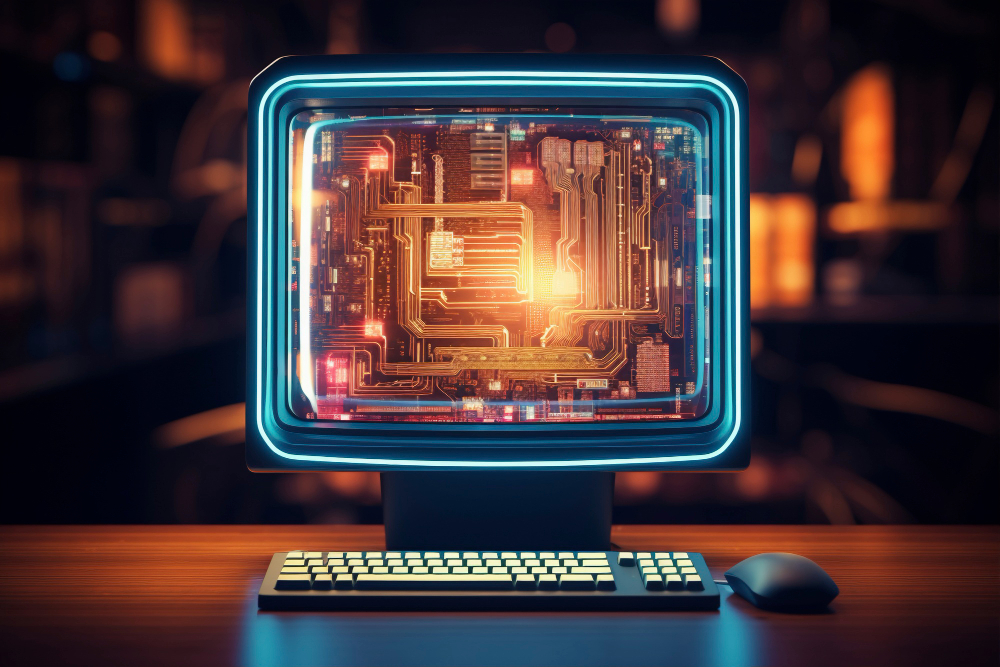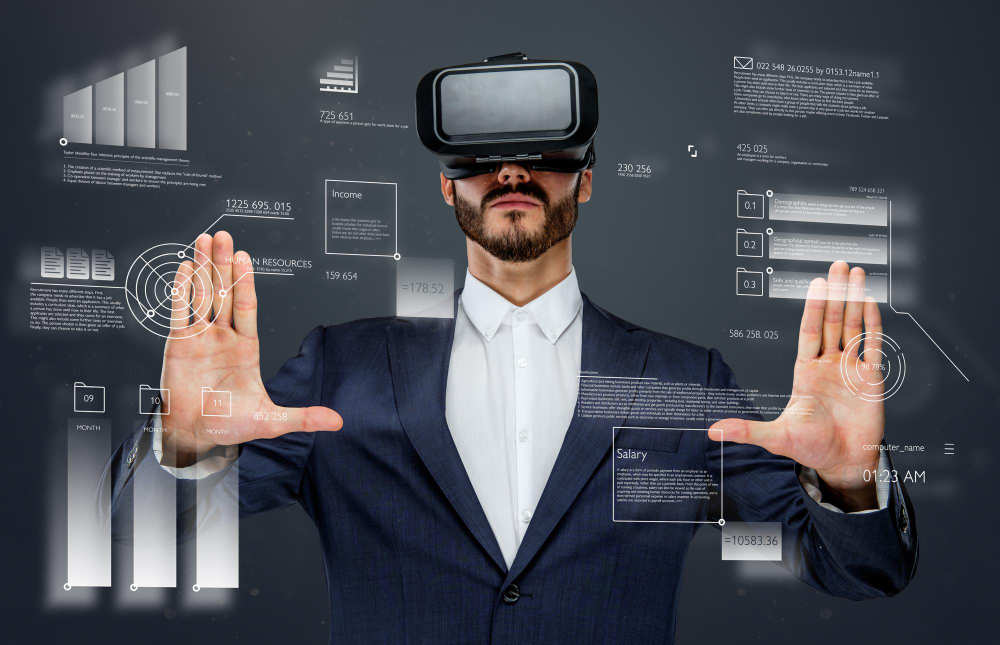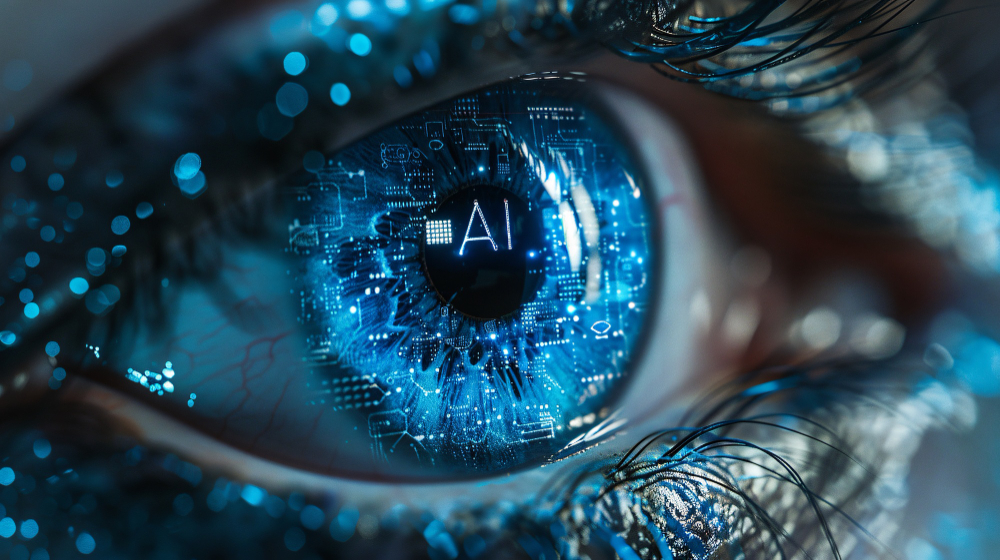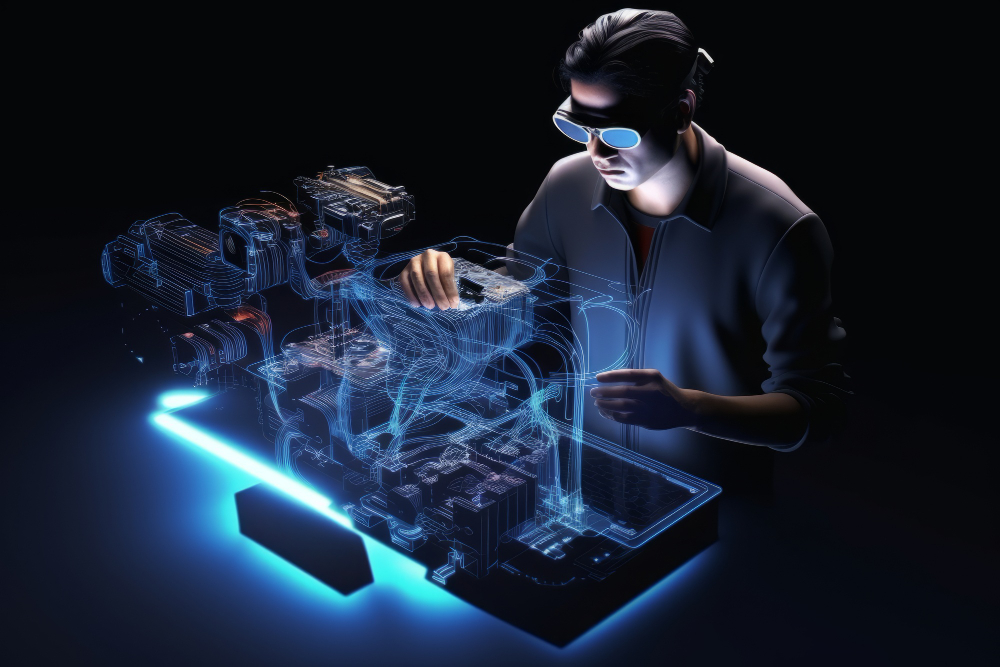Computer Vision Applications
Introduction
What is Computer Vision AI?
Computer Vision AI is that subdomain of AI which is aimed at equipping computers with artificial intelligence to interpret and understand the visual world.
It's about processing images and videos in ways that enable computers to do what was exclusively considered a job for the human visual brain.
Explanation of what Computer Vision is and how it relates to AI

Computer vision is the interdisciplinary field of the computer vision based systems, science, engineering, and mathematics that aims to create programs and systems that enable computers to understand visual information.
Techniques from the artificial intelligence models are used for machine learning, from visual inputs, pattern recognition, and decision-making based upon the processed information.
In other words, the computer vision system serves as the eyes for AI systems, equipping them to perceive their environment and interact with it accordingly.
Computer vision is the subdomain of AI that enables the the computer vision algorithm to decide on visual inputs much like human decision-making with visual input from his eyes and brain.
This field involves training machines to recognize, analyze, and process digital images and videos or any other forms of visual data.
This technology would hence enable computers to "see," understand the world by using multiple cameras and sensors, and convert visual information into actionable insights.
At the core, it represents Computer Vision: the ability to mimic human vision at the technical level thus equipping machines with capabilities to do object detection, facial recognition and optical character recognition,, image classification, and even scene understanding in real-time-for instance: self-driving cars, which utilize computer vision for the identification intelligent detection of road signs, pedestrians, and even other autonomous vehicles themselves; thus, they make independent decisions for driving.
Computer Vision heavily depends on ML and DL-the two significant aspects of AI, where models learn to interpret data by exposure to large amounts of data without being explicitly programmed to look for specific patterns.
The models usually used to process image data are neural networks; in particular, CNNs.
These learn to spot edges, colors, and other textural features in images and improve with more data exposure.
Applications of this field of AI include industries like healthcare (for instance, medical imaging), retail (like product search by image), or manufacturing processes (quality by automated visual inspection), or entertainment (augmented reality).
Computer vision is used, in health care for instance helps detect anomalies in medical scans, like Xrays and MRIs, which the doctor can make use of to make more accurate disease diagnoses.
In short, Computer Vision represents an application of the world of AI, focusing on giving machines the ability to "see," or interpret visual information, without subjective human judgment thereby driving innovation in and across different segments using computer and vision systems, seeks the applications of automated systems that make intelligent decisions based on data captured through machine vision.
Historical Context and Evolutions of Computer Vision Technology

Computer vision originated in the 1960s through early experiments on digital image processing techniques.
Growth in hardware, algorithms, and data availability further accelerated the field so much across the decades.
Perhaps one of the most boundary-pushing developments was machine learning in the 1980s, but with deep learning in the 2010s, that really changed the game when it came to computer vision technology.
CNNs opened the way to tremendous breakthroughs toward achieving state-of-the-art level in areas, such as medical image processing, and object detection and object classification,, and object detection.
Whats the importance of Computer Vision AI
Computer Vision AI is a crucial component of various industries: its innovation and efficiency increase in different industries by providing analysis for big volumes of visual data and transforming how businesses go about increasing productivity and creating room for new opportunities created in business.
Key Applications and Impact on Other Industries
Computer Vision AI can be applied in every industry, including health, automotive, retail, security, and agriculture.
All those sectors benefit from better decision-making, improved efficiency of operations, and above all, excellent customer experience.
Basic Concepts of Computer Vision technology

-Image Processing
Image processing techniques include simple techniques like filtering, edge detection, and color space transformation.
All these techniques provide the foundation for more complex analyses by improving the quality of images and adequately preparing them for any further treatment.
-Feature Extraction
Feature extraction is also important for the identification pattern recognition of notable features in an image.
Techniques, using such systems as Scale-Invariant Feature Transform (SIFT) and Histogram of Oriented Gradients (HOG), can extract key features representing content, hence allowing further analysis and classification.
-Object Detection and Recognition
Correct identification object tracking and classification of objects in images is the key to both object identification, object tracking, detection and recognition.
It has been enhanced with Region-based CNN, R-CNN improvements and recently developed YOLO, or You Only Look Once, for real-time multiples detections.
-Segmentation
Segmentation separates an image into meaningful sections in order to deeply study it.
This is very crucial in many medical imaging applications or differences between healthy tissues and diseases.
-Deep Learning in Computer Vision
Computer vision has made tremendous strides through deep learning techniques, especially the CNNs.
CNNs are models of the neural network within the eye of human beings that automatically learn from images. Such a model yields state-of-the-art performance for a wide range of tasks.
Key Technologies and Techniques

-Convolutional Neural Networks (CNNs)
CNNs is typically a kind of feedforward neural network that involves multiple layers deep learning that are linked to hierarchical feature extraction from images.
This is because the latest architectures, like AlexNet, VGG, and ResNet, have been able to set benchmarks on various image classification tasks and, therefore, solidified deep learning algorithms and method capabilities regarding various computer vision tasks.
-Generative Adversarial Networks (GANs)
GANs is one of the neural networks having two competing neural nets in it, namely, the generator and discriminator.
In the construction of this form, it becomes easy for GANs to generate noise that leads to the creation of more realistic images that could be associated with synthetic image data, generation, enhancement of resolution in images, etc .
-Transfer Learning
Transfer learning allows one to exploit pre-trained models and machine learning to enhance performance and efficiency in new tasks.
The idea of leveraging previously acquired knowledge helps developers work on many computer vision tasks and projects with little data in achieving high accuracy.
-Reinforcement Learning in Vision
Reinforcement learning applies the principles of trial and error in training models on visual tasks.
So, especially in robotics and autonomous systems, the model learns to optimize its performance through rewarding successful outcomes.
Applications of Computer Vision AI

-Healthcare
In the health industry, computer vision AI boosts medical image analysis,, diagnostics, and surgical support.
For instance, X-ray medical image analysis now has a computer vision system important has been automated to facilitate the speedy and precise detection of a condition, and surgical robots use a vision system for precision in an operation.
-Automotive
Computer vision AI has a major role in the automotive industry through its contribution to autonomous driving systems.
Vehicles can see, know about surroundings, and allow such functions in the system self driving cars, including traffic monitoring and even the prevention of collision through equipment with these technologies that ensure safety.
-Retail
Computer vision helps retail businesses with tracking, customer analytics, and even virtual try-ons.
Video data feeds analyzing customer behavior help retailers optimize store layout and enhance the shopping experience.
-Security and Surveillance
Computer vision enhances security systems by using artificial intelligence and enabling computers strongly leveraging facial recognition technology, anomaly detection, and threat assessment.
These technologies improve safety in public space and enable organisations to respond quickly in the face of potential threats.
-Agriculture
Computer vision also enhances agricultural operations and farming. It includes crop monitoring, equipment maintenance, and land-quality checks.
Using videos and image data from overviews of the farming operations with great precision can help farmers assess and maintain each aspect.
Computer vision supports crop monitoring, pest detection, and yield prediction in agriculture.
Analysis of images derived from drones and sensors can assist farmers in making the right decisions to drive effective crop management and sustainability.
Challenges in Computer Vision AI

-Data Quality and Annotation
Quality datasets with proper annotations are important for good model training.
The inability to preserve such datasets may thereby intervene in the successful formation of accurate computer vision systems.
-Computational Resources
These are very computationally intensive tasks for a computer vision application. Algorithms and hardware must be efficient in the processing of large amounts of visual data quickly.
-Real-time Processing
The challenges of real-time performance occur in applications such as autonomous driving and security.
Optimizing for speed does not equate to sacrificing accuracy; otherwise, it is its achievement in a balance with the others, such as memory and battery life.
-Ethical and Privacy Concerns
Computer vision systems are prevalent, but in their growing adoption, ethical and privacy concerns arise.
Issues such as surveillance, bias in face recognition systems, and data privacy issues need to be addressed to garner public trust.
Future Trends in Computer Vision AI
-Edge Computing
Edge computing allows computer vision algorithms to run at the edge: everything reduces latency and bandwidth usage.
This is crucial for applications that require real-time processing.
-3D Computer Vision
Advances in 3D computer vision enable machines to interpret and analyze three-dimensional data, leading to better applications in robotics, virtual reality, and augmented reality.
-Explainable AI in Vision
As the field of computer and machine vision further advances, it will increasingly require explainable AI.
The addition of transparent models that add insights to decision-making can increase the rate of adoption and trust.
-NLP Integration with Other AI Technologies
The interface of these computer vision systems with other AI technologies, like natural language processing and robotics, offers new possibilities.
Such implementations can lead to more complex, sophisticated applications and further improve the capabilities of AI systems.
Case Studies
Success Stories
Implementations of computer vision AI can be seen in various successful industries.
For example, Google's image search uses advanced computer vision algorithms for immense data input-like images in its dataset, giving the user relevant results.
Impact and Benefits Realized

The implementations reflect efficiency, improvements in decision-making, and experiences of the users.
Companies that have used the computer vision techniques and machine learning techniques and AI tend to go back with full returns on their investments in terms of optimized operations.
Lessons Learned
These case studies carry some very important lessons; data, quality control, continuous models training, and computer vision development of solutions from cross-disciplinary collaborations towards success.
Implementing Computer Vision AI
Development Frameworks
The most popular frameworks to build computer vision applications are TensorFlow, PyTorch, and OpenCV.
All these tools provide a wide variety of libraries and tools to efficiently develop and deploy the models.
Best Practices
The best practices to develop a computer vision solution are choosing the correct architecture, data and quality control, testing and validation to ensure robustness.
Tools and Resources
Key tools and resources that can be given to developers include access to pre-trained models, datasets like COCO and ImageNet, and also online courses that provide the foundational knowledge of computer vision.
Conclusion
Summary of Key Points
Computer Vision AI is a transformative technology that changes the way machines think of and interact with the visual world.
The core concepts, the key technologies, and the diversified applications together present the significance of computer vision AI across many different industries.
Computer vision has a much brighter future, as research in computer vision is continually evolving and integrating with other AI technologies; therefore, more innovative solutions can be expected.
It will simply be that the impact of popular computer vision applications and AI will only increase as the field will continue to expand towards the future of shaping the scope of technology and society.
Among the most innovative, firms such as Thinking Stack have taken the forefront in developing new, computer graphics and computer vision application AI-based solutions for market.
Using various deep learning and machine learning algorithms and generative models and coming up with industry-specific solutions tailored to health, retail, and security for the company, the company has managed to successfully automate data analysis and create enhanced customer experiences through computers' sight.
With edge computing with real-time processing capabilities, Thinking Stack is really taking its popular computer vision applications to the next level.
Frequently asked questions (FAQs)
1. What is the difference between computer vision and image processing?
- Image processing involves basic manipulation of images (such as filtering, resizing, or enhancing), whereas computer vision focuses on interpreting and understanding the content of images to enable decision-making by machines.
2. How do Convolutional Neural Networks (CNNs) work in computer vision?
- CNNs are specialized neural networks designed to process visual data.
They work by using multiple layers to automatically learn and extract features from digital images themselves, such as edges, textures, and shapes, which help classify visual images or recognize objects in the images.
3. What industries benefit the most from computer vision AI?
- Computer vision AI is widely used in multiple industries, like healthcare (medical imaging), automotive (autonomous vehicles), retail (inventory management), security (facial recognition), and agriculture (crop monitoring).
4. What challenges do developers face when implementing computer vision AI?
- Some key challenges include the need for large, well-annotated datasets, high computational resources, real-time processing capabilities, and addressing ethical and privacy concerns related to surveillance and data usage.
5. How does computer vision AI handle real-time processing?
- Real-time processing in many computer vision applications using AI requires optimizing algorithms for speed and efficiency.
Edge computing and hardware acceleration, such as using GPUs or specialized chips, help achieve real-time performance by reducing latency and processing time.